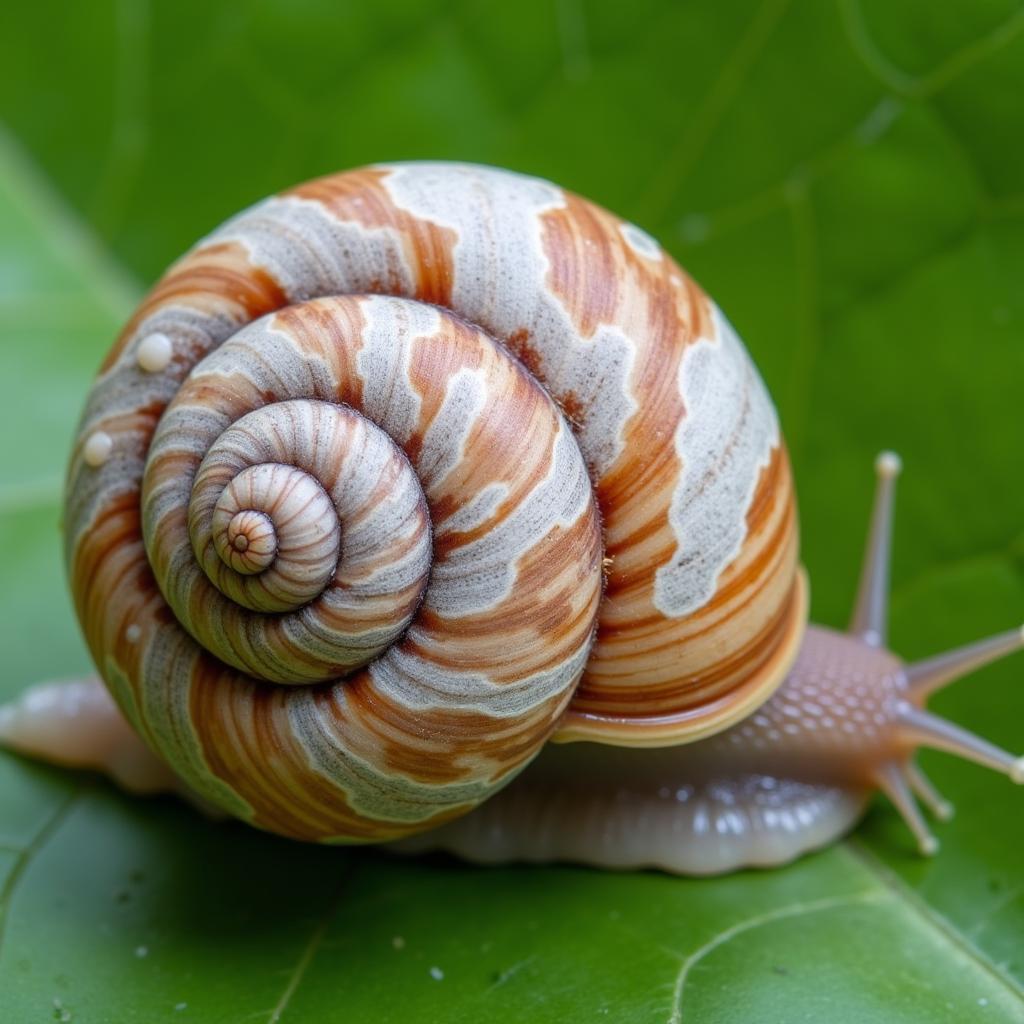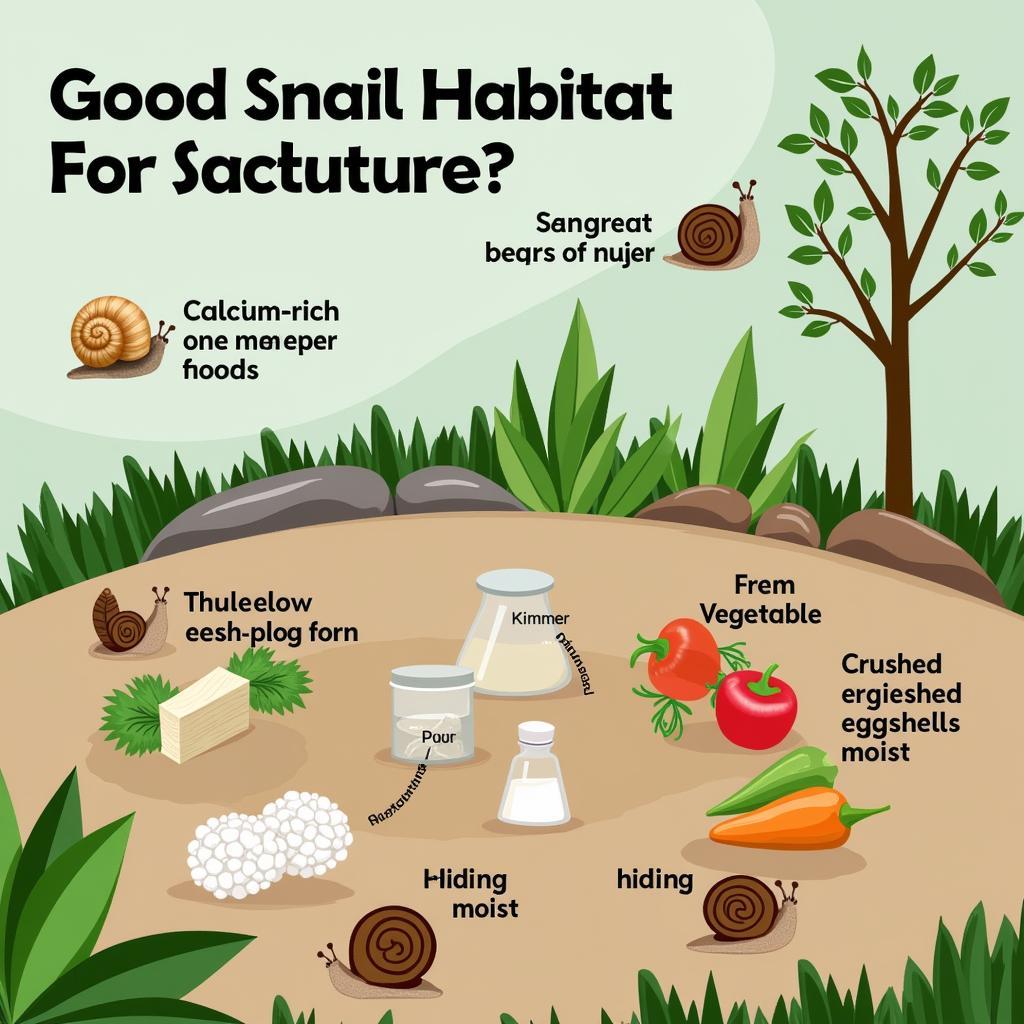Your snail’s shell turning white can be alarming, but it’s not always a sign of a serious problem. Understanding why this happens is key to ensuring your snail’s health and well-being. This article will explore the common causes of shell whitening and offer practical solutions to help your snail thrive.
Understanding Snail Shell Composition
A snail’s shell is primarily made of calcium carbonate, the same material that makes up eggshells and limestone. This shell is crucial for protection and maintaining the snail’s internal environment. Over time, the shell can undergo changes in color and texture due to various factors. Understanding these factors is essential to addressing any potential issues.
The outer layer of the shell, the periostracum, is made of protein and can wear away, exposing the underlying calcium carbonate layer. This can sometimes appear as whitening, especially if the underlying layer is naturally lighter in color.
 Snail shell turning white
Snail shell turning white
Common Causes of White Snail Shells
Several factors can contribute to a snail’s shell turning white. These include dietary deficiencies, environmental factors, and natural aging. Let’s delve into each of these in more detail.
Dietary Deficiencies
One of the most common reasons for shell whitening is a lack of calcium in the snail’s diet. Calcium is vital for shell growth and repair. Without sufficient calcium, the shell can weaken and become discolored, often appearing white or pale.
Another nutritional deficiency that can affect shell health is a lack of protein. While calcium forms the bulk of the shell, protein is necessary for the periostracum. A deficient diet can lead to a thin and damaged periostracum, making the shell appear white.
Environmental Factors
The environment plays a significant role in shell health. Acidic water can leach calcium from the shell, leading to thinning and whitening. Similarly, low humidity can dehydrate the snail and affect shell development.
Overcrowding can also be a contributing factor. In overcrowded conditions, snails may compete for resources, including calcium-rich food, leading to deficiencies and shell problems.
Natural Aging
As snails age, their shells can naturally wear down, revealing the underlying layers. This can sometimes appear as whitening, particularly in older snails. This type of whitening is usually accompanied by other signs of aging, such as a less vibrant periostracum and a more brittle shell.
Preventing and Addressing White Shells
Addressing shell whitening involves identifying the underlying cause and taking appropriate action. Providing a calcium-rich diet is crucial. Cuttlebone, crushed eggshells, and calcium supplements are excellent sources of calcium for snails.
Maintaining a suitable environment is equally important. Ensure the water has the correct pH and hardness and provide adequate humidity. Avoid overcrowding and ensure proper tank hygiene.
 Snail shell care
Snail shell care
Conclusion
A white snail shell can be a sign of various underlying issues, from dietary deficiencies to environmental factors. By understanding the causes and implementing appropriate preventative measures, you can ensure your snail’s shell remains healthy and strong. Providing a calcium-rich diet, maintaining a suitable environment, and addressing any underlying health problems are key to keeping your snail happy and thriving. Remember, addressing these issues early on can prevent long-term problems and help your snail live a long and healthy life.
FAQ
- What is the best way to provide calcium to my snail?
- How can I tell if my snail’s environment is suitable?
- What are the signs of a healthy snail shell?
- How often should I clean my snail’s tank?
- Can a white shell be reversed?
- What other dietary needs do snails have besides calcium?
- Are there any specific types of snails more prone to white shells?
Need further assistance? Please contact us:
Phone: 0909802228
Email: doibongda@gmail.com
Address: 101 Đ. Lý Chiêu Hoàng, Phường 10, Quận 6, Hồ Chí Minh, Việt Nam.
We have a 24/7 customer support team.